MENU
MENU
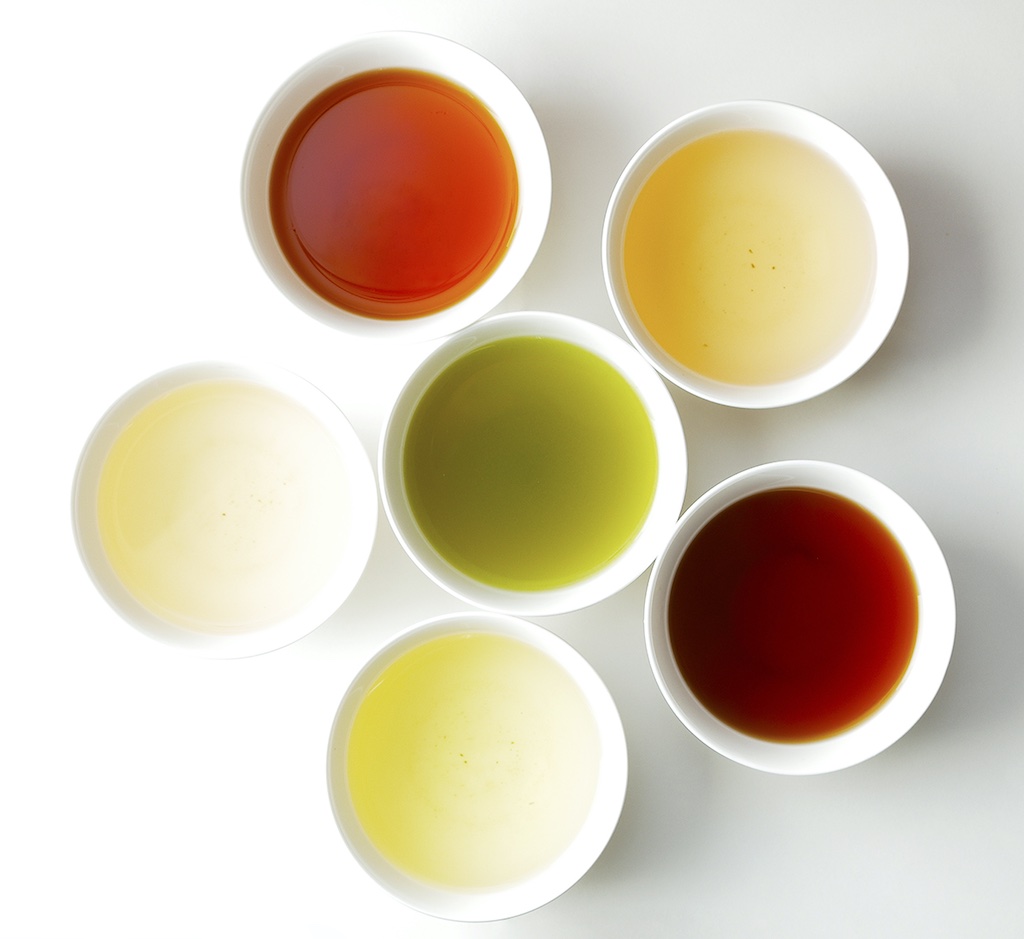
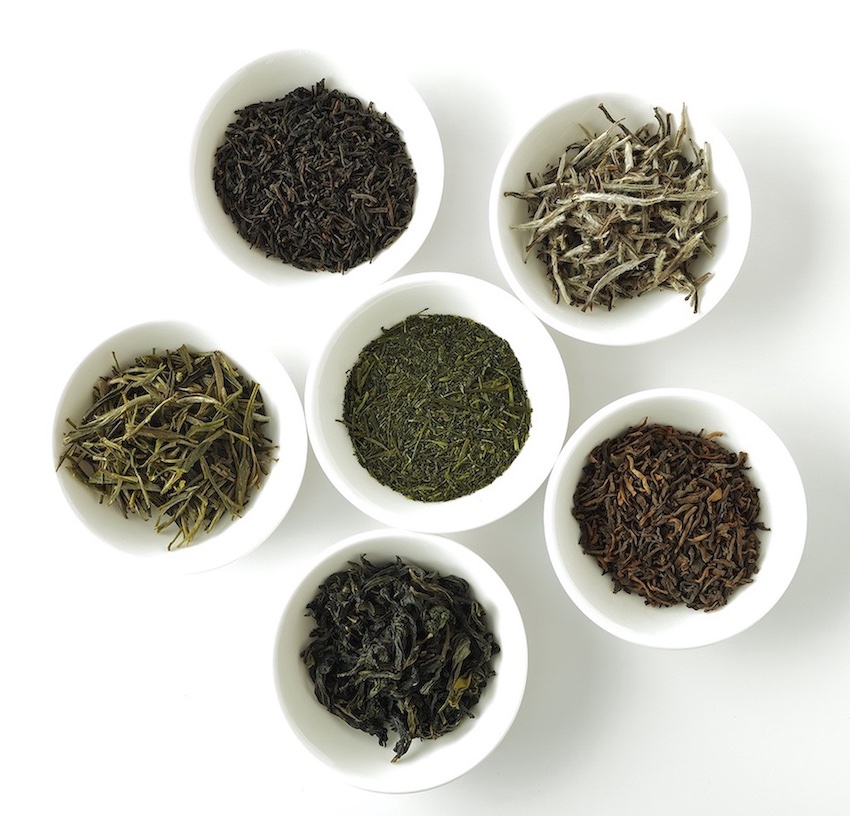
Black tea Blue tea (Oolong tea) Dark tea Green tea Others White tea Yellow tea
6 types of tea
Camellia sinensis
The tea plant is a species of evergreen shrub or small tree in the flowering plant family Theaceae. The Latin name of the tea plant is Camellia sinensis (L.) Kuntze.
A small-leaf species of scrubby tree, Camellia sinensis var. sinensis, is cultivated in China, Japan, etc. A large-leaf species, Camellia sinensis var. assamica, is cultivated in India, Sri Lanka, etc. The average length of a mature leaf is 5 to 8 cm for Camellia sinensis var. sinensis. On the other hand, the average length for Camellia sinensis var. assamica is 12 to 20 cm or more.
Tisane and Herbal Tea
Beverages made from plants other than Camellia sinensis (L.) Kuntze are called tisanes or herbal teas.
Tea is classified into six categories: green tea, white tea, yellow tea, blue tea (oolong tea), black tea, and dark tea.
Green tea (non-fermented tea):
Fermentation degree 0%
There are 2 types of green tea, steamed tea and pan-fired tea. Steamed green tea is produced mainly in Japan. Pan-fired tea is produced in China, South Korea, Vietnam and other countries including Japan.
Includes matcha, sencha, hojicha, etc.
Basic production process: Parching/Steaming → Rolling → Drying
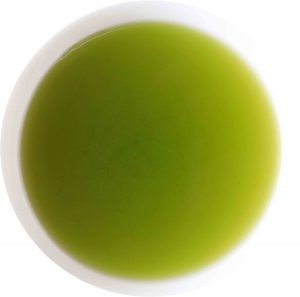
White tea (lightly fermented tea):
Fermentation degree about 5 to 10%
Chinese Baihao Yinzhen (白毫銀針) is a famous white tea. Now white tea is produced in India, and other countries as well as China.
Basic production process: Withering → Drying
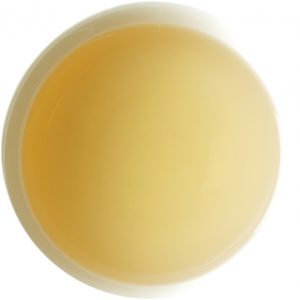
Yellow tea (lightly fermented tea):
Fermentation degree about 5 to 10%
Production of yellow tea involves a process of sweltering called 焖黄 (menhuang). The process involves wrapping the still-hot tea leaves in paper and placing them in a place with high-temperature and humidity, such as a damp wooden tub.
Chinese Huoshan Huangya、Mengdhing Huangy and Junshan Yinzhen are famous types of yellow tea.
Basic production process: Parching → Rolling → Sweltering→ Drying
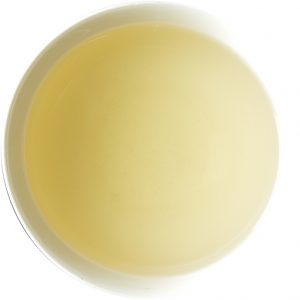
Blue tea (Oolong tea) (semi-fermented tea):
Fermentation degree about 10 to 80%
Oolong tea is produced in China and Taiwan a lot.
Anxi Tieguanyin, Wuyi Yancha, Fenghuang Dancong, Taiwanese Whenshan Baozhongcha, Dongding Wulongcha, Gaoshan Wulongcha, etc. are well-known types of oolong tea.
Basic production process: Withering → Parching → Rolling → Drying

Black tea (fully-fermented tea):
Fermentation degree 100%
Now black tea is produced in various tea production areas around the world.
The three major black teas in the world are Chinese Qihong, Indian Darjeeling and Sri Lankan Uva.
Basic production process: Withering → Rolling → Fermentation → Drying
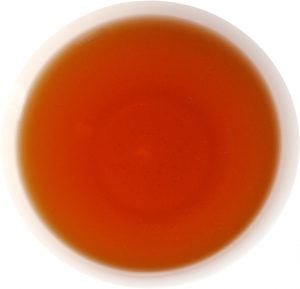
Dark tea (post-fermented tea):
Fermentation degree 80 to 100%
Chinese Yunnan Pu’er tea is a famous dark tea. Dark tea is produced not only in China but also in Japan, Thailand and Myanmar. 4 different types of dark tea are produced in 4 Prefectures in Japan. Thailand’s Miang and Myanmar’s Lahpetso are also post-fermented teas, but are produced to be eaten rather than drunk.
Basic production process: Parching/Steaming →Rolling → Pile-fermentation→Drying
抽出液-300x300.jpg)
Others:
Flavored tea: Flavored teas are tea leaves scented with flowers. There are various flavored teas such as Chinese jasmine tea and Vietnamese lotus tea.
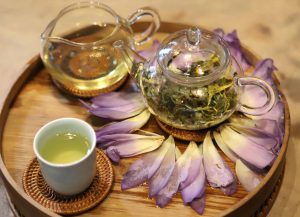
Special Dried Lotus Tea Flower at Hien Min Tea House in Hanoi, Vietnam (January 2020)
Craft tea: Flowers such as globe amaranth and chrysanthemum are bound with tea leaves using threads, to create various shapes. When you put a craft tea in hot water, the flowers will open and you can enjoy its beauty. Many craft teas are produced in Fujian and Anhui provinces in China.
ジャスミン茶2-300x195.jpg)
Craft tea 双龍劇珠 (December 2018)
Reference:
Jane Pettigrew (2004), The Coffee Companion: A Connoisseur’s Guide, Running Press
THE CAMELLIA SINENSIS TEA HOUSE (second edition), Kevin Gascoyne, Francois Marchand, Jasmin Desharnais and Hugo Americi (2014), Tea: History, Terroirs, Varieties, Firefly Books
日本中国茶普及協会(2015) よくわかる中国茶の本(第3版) 日本中国茶普及協会
日本中国茶普及協会 http://china-t.org
工藤佳治主編者(2007) 中国茶事典(初版) 勉誠出版
*The site does not describe all “Teas of Japan” or all “Teas of the World”. Additionally, each article expresses the writer’s personal experience and feelings.
*The information provided on this site may be updated. If you find any information in this article that is incorrect, new, or incomplete, please contact CHAMART.